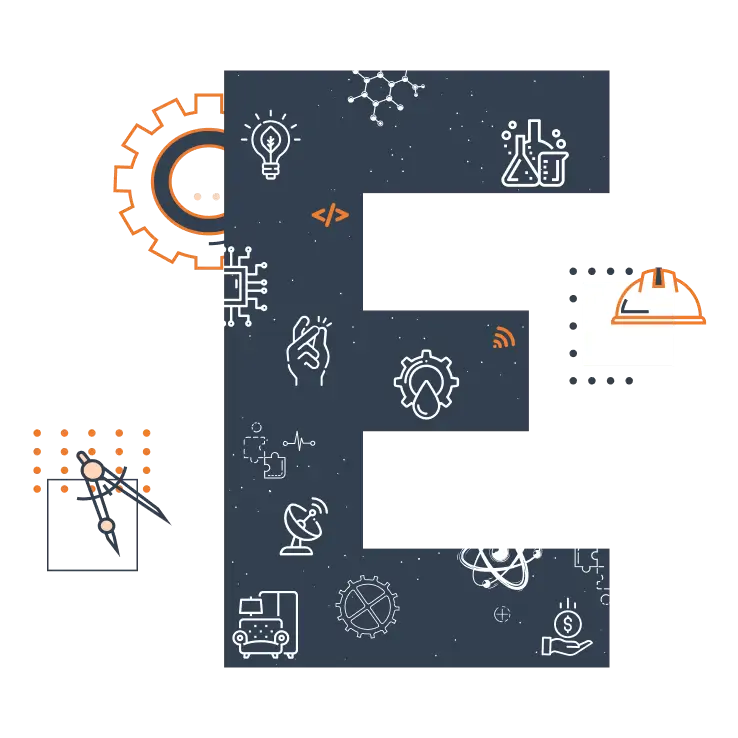Aerospace Engineering

Language
English
1277 Views
54 Enrollments
Share
Access anytime
1000 Min
This course format through pre-recorded video. You can buy and watch it to learn at any time.
FREE
videos

FREE
Why do you enroll
Key topics covered
Course details
Course tags
Course content
Why do you enroll
To improve your knowledge in the Aerospace Engineering course, focus on developing a strong foundation in the fundamental principles of aerodynamics, propulsion, structures, and control systems.
Key topics covered
Introduction
Motion in Space
Rotational Frame of Reference and Orbital Velocities
Velocity Requirements
Theory of Rocket Propulsion
Rocket Equation and Staging of Rockets
Review of Rocket Principles: Propulsion Efficiency
Examples Illustrating Theory of Rocket Propulsion and Introduction to Nozzles
Theory of Nozzles
Nozzles Shapes
Characteristic Velocity and Thrust Coefficient
Divergence Loss in Conical Nozzles and the Bell Nozzle :
Unconventional Nozzles and Problems in Nozzles
Criterion for Choice of Chemical Propellants
Choice of Fuel-Rich Propellants
Performance Prediction Analysis
Shifting Equilibrium and Frozen Flow in Nozzles
Factors Influencing Choice of Chemical Propellants
Introduction to Solid Propellant Rockets
Solid Rockets – Propellants
Show more
Course Details
This course introduces the fundamental principles and concepts of aerospace engineering, including the design, analysis, and operation of aircraft, spacecraft, and missiles. Topics include:
- Introduction to aerospace engineering
- Aerodynamics and aerothermodynamics
- Aircraft and spacecraft design
- Propulsion systems (airbreathing and rocket engines)
- Control and guidance systems
- Structures and materials
- Aerospace systems and performance
Source: nptelhrd (Youtube Channel)
Aerospace Propulsion by Dr. P.A. Ramakrishna,Department of Aerospace Engineering, IIT Madras

Show more
Course tags
Industry domains :
Engineering Disciplines :
Course content
1
Introduction :
2
Motion in Space :
3
Rotational Frame of Reference and Orbital Velocities :
Show more
FAQs on Aerospace Engineering
Having specific question ? Ask now
Trainer’s Feedback
165 course rating
39 ratings
AF
A Fabio Riyan
2 months ago
Very useful to budding engineers
VN
VIKAS_D_ NAYAK
2 months ago
usefull
UM
URK20AE1047 MOSES
3 months ago
very useful for beginners
PS
Prathamesh Shevale
3 months ago
Excellent course.
MM
Mostafa Mohamed Elsayed
3 months ago
Good
SS
SANJAY S 22CHR058
3 months ago
Good
FK
Farhan Khan
4 months ago
Good course
MS
Marthin Siagian
4 months ago
Good Course
AA
Ayan Adhikary
4 months ago
Great 👍
AH
ABDUL HASIB HASAN ZAYED
4 months ago
Very good.
TE
Team EveryEng
5 months ago
Good
PE
Process Engineering World
5 months ago
Good
PP
Prasenjit Pandit
5 months ago
Well narrated !!
TH
Tc.Mohd Hairul Jamaludin
5 months ago
Good
TH
Tc.Mohd Hairul Jamaludin
5 months ago
Good knowledge
AJ
Anuj Jagadale
5 months ago
well prepared content.
AJ
Anuj Jagadale
5 months ago
Highly appreciable content made.
TE
Team EveryEng
5 months ago
Good course
MR
Mohammed Rizvi Uvais
6 months ago
Well prepared presentation
MA
Mario Alberto Aguilar Herrera
7 months ago
Simple but excellent explaining
SC
SARTHAK CHAVAN
9 months ago
The lecture was quite good and interesting
HN
Harishankar Nagapuri
9 months ago
Excellent
SN
Shripad Nilakhe
10 months ago
Nice
NG
Nishanth G
10 months ago
Good Seminar
D2
DAVE 2D
10 months ago
Good session and explain as i expected
SK
Srinivasulu Killa
10 months ago
Good
bm
bhavin mehta
a year ago
Excellent course.
SA
Syed Aamir
a year ago
Good
SG
Sampath G
3 months ago
nicely explained
MY
MUHAMMAD YOUSUF KHAN
6 months ago
good good
PK
Prasanna Koduru
7 months ago
Good
SG
Sampath G
3 months ago
Should have discussed ddetails like 1.why density based solver. 2.why pressure boundary conditions. 3.How pressure values affect the working of nozzle etc
MF
Mustahid Fahim
3 months ago
Lectures are good but it's already available in the YouTube nptel lectures why should I watch here
KM
Khushal Mahajan
3 months ago
Why uploading NPTEL videos on your site ?
NA
Noor Alam
6 months ago
Good
YD
Yogesh Desai
a month ago
Useless
JK
Jahanzeb Khan
5 months ago
where are the other video
rk
recheal komugisa
7 months ago
Request for the video
TK
TANMAY KULAYE
10 months ago
Only one video is uploaded, rest of the videos are not there. 👎👎👎 Please upload other videos of Green Hydrogen.
Certificate of Mastery

Receive well recognised certificate that you can showcase on
Featured courses
Hazard Identification and Risk Assessmen...

How to prevent corrosion in the oil and ...

Application and use of "Green Hydrogen"

Career in EPC projects for Freshers

Career in EPC Cost Estimation

Learn MATLAB Programming

More Technical Courses From Team EveryEng
Pressure Vessel Essentials: Need of code...

How to prevent corrosion in the oil and ...

Application and use of "Green Hydrogen"

Gas Turbines with special emphasis on hy...

Career in EPC projects for Freshers

Career in EPC Cost Estimation

Bolt Torque Calculations using Dennis Mo...

Introduction to SAP and its role in the ...

More Articles From Team EveryEng
Davisson and Germer Experiment

Compton Scattering Effect

Coherent Source

Black Body Radiation

The engineering services is changing and...

What is first, YOU or YOUR COUNTRY?

Visionary Leaders make the nation great

Engineers need business acumen to be suc...

Collaboration is the first step of intel...

More Communities From Team EveryEng
Similar Content Learn:
Basic of CMS IntelliCAD and GD&T

Fundamentals of Quality, QMS & ISO-9001

Buffer Tank - Basic, Concept, Design, Ca...

Business Excellence through Quality, QMS...

Renewable Energy, Energy Storage Systems...

Atomic Structure & Bonding In Materials

Complete Basics to Advance of Materials ...

Introduction to practical FEA-2

Finite Element Analysis: A Practical Int...

Similar Content Mentor:
All About Interviews

Presentation Skills _ Part 3

Presentation Skills _ Part 2

Similar Content Seminar:
The Petrochemical and Refining Congress:...

7th International Oil & Gas Chemistry, C...

Similar Content Blogs:
Types of Welding Joint

Welding Metallurgy

Engineering Materials

PRC Europe 2025: Where Industry Leaders ...

Technical Basis for Impact Test Exemptio...

Aerodynamic physics of the Delta Wing

Seal of Hydraulic cylinder.

PRC Europe 2025: Italian Partners at the...

Similar Content Community:
Firefighting Design By Naga

Engineer's Corner

Cathodic protection

Corrosion

Cae engineers

Similar Profile:

Vijay Sachdev
Consultant - Project & Pr...

Debojyoti sen
MD & CEO, SAURYAJYOTI REN...

Sabari Kuppuraj
Engineer

Dr Bhawani Singh Rathore
Renewable Energy Coach an...

Mir Abbas
Senior Engineer

HEXSPUR FOUNDATION
Mechanical Design Enginee...

Anup Kumar Dey
Owner of https://whatispi...

Please wait

















































